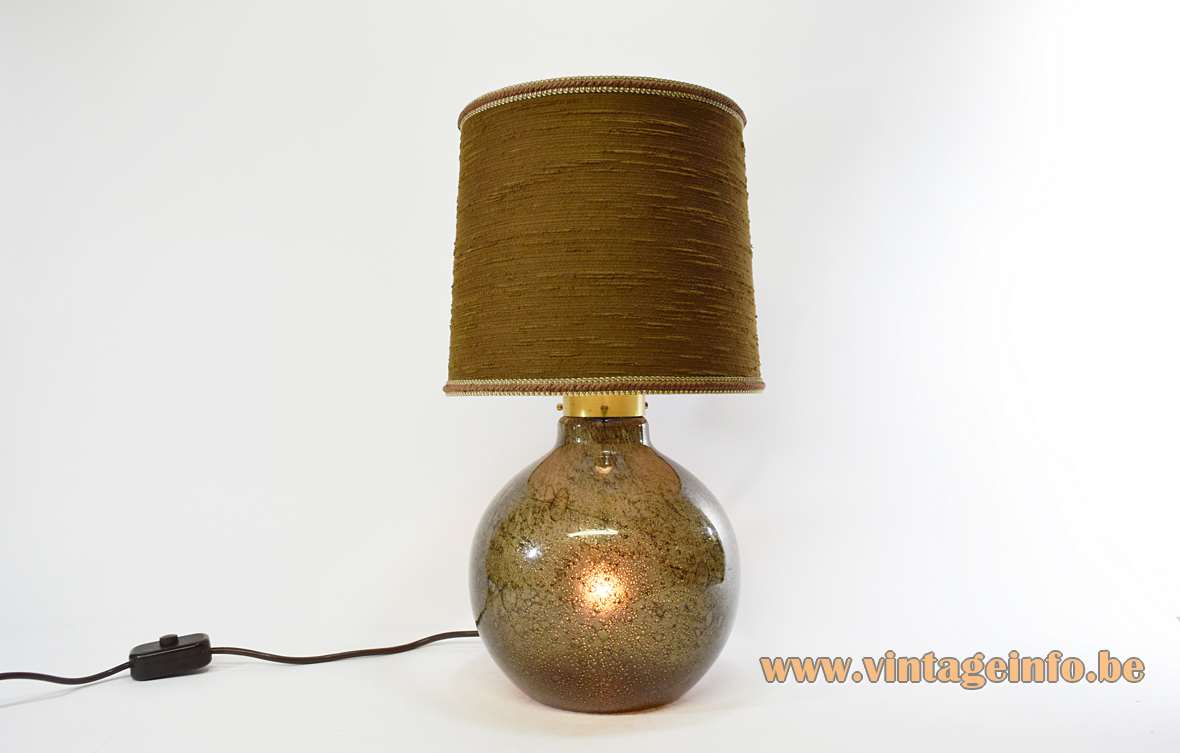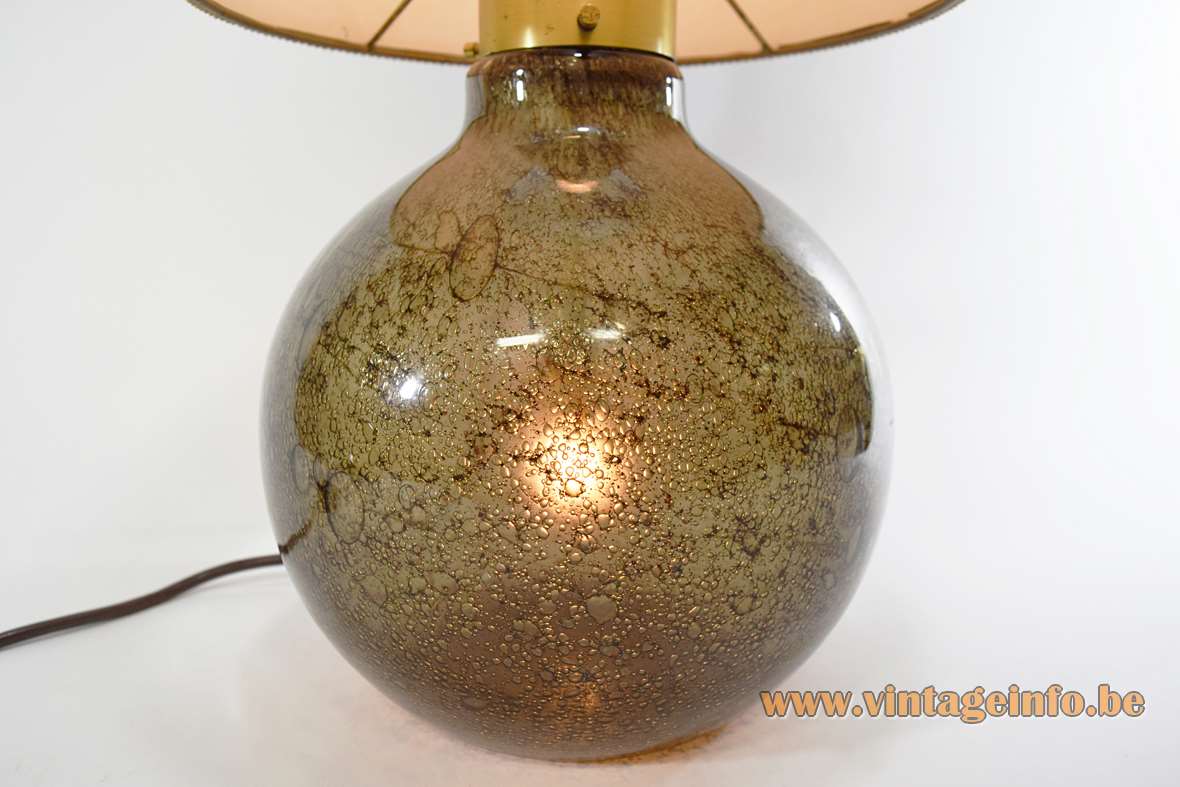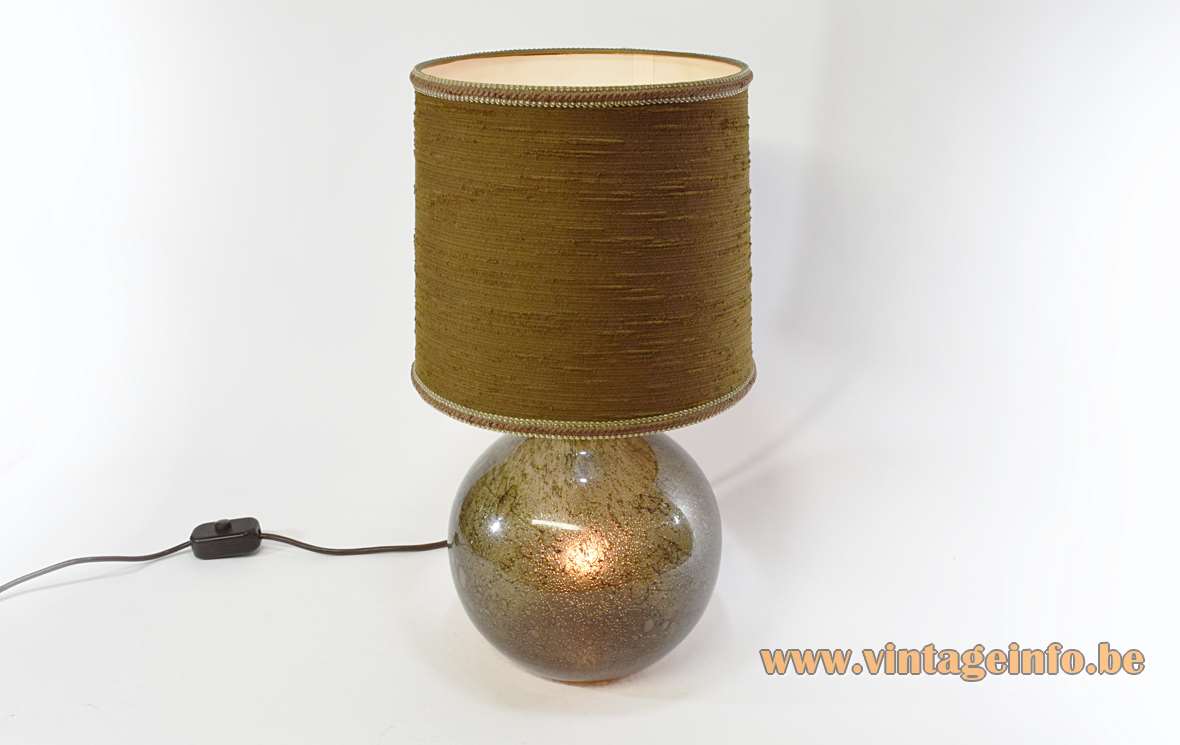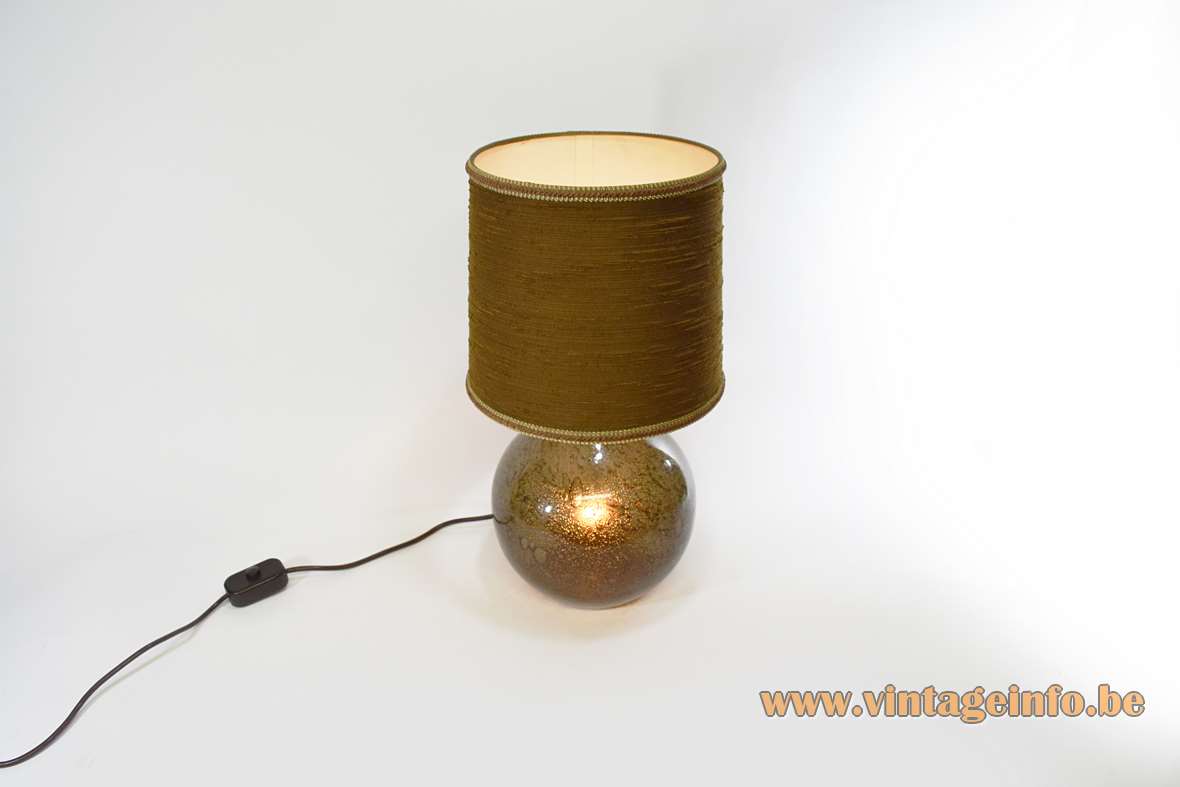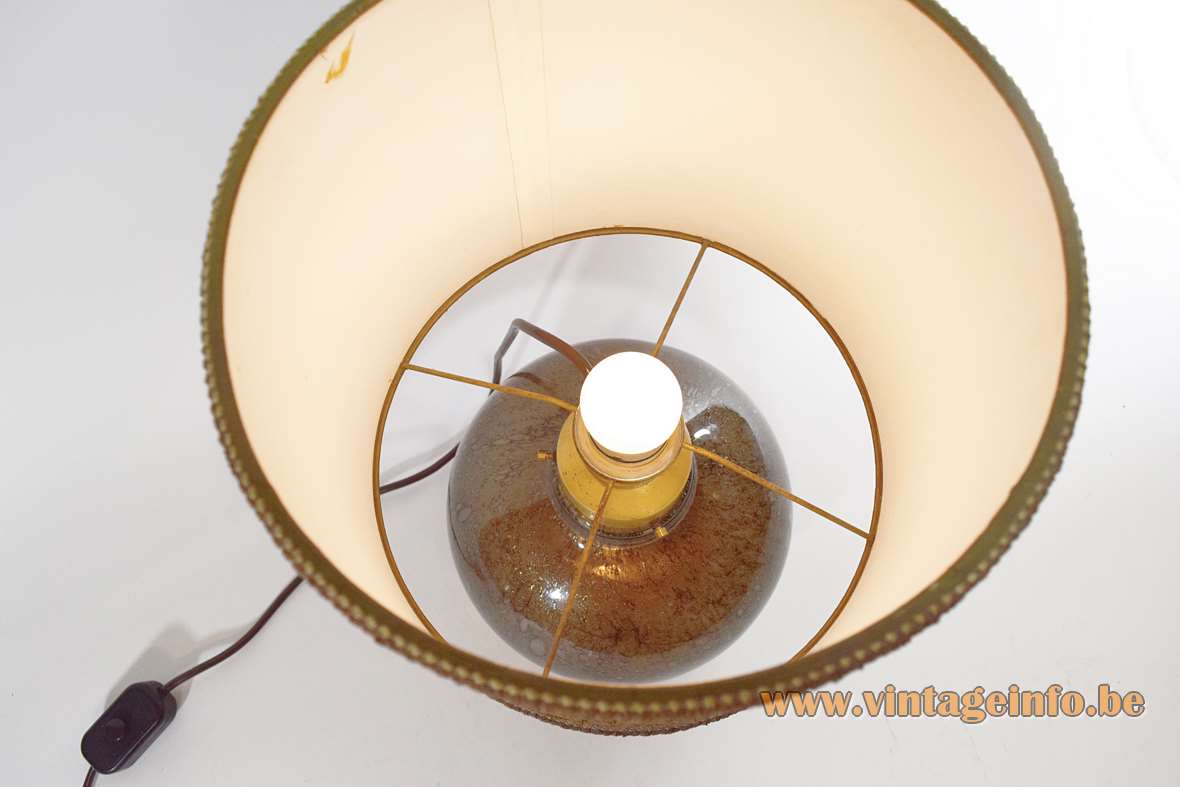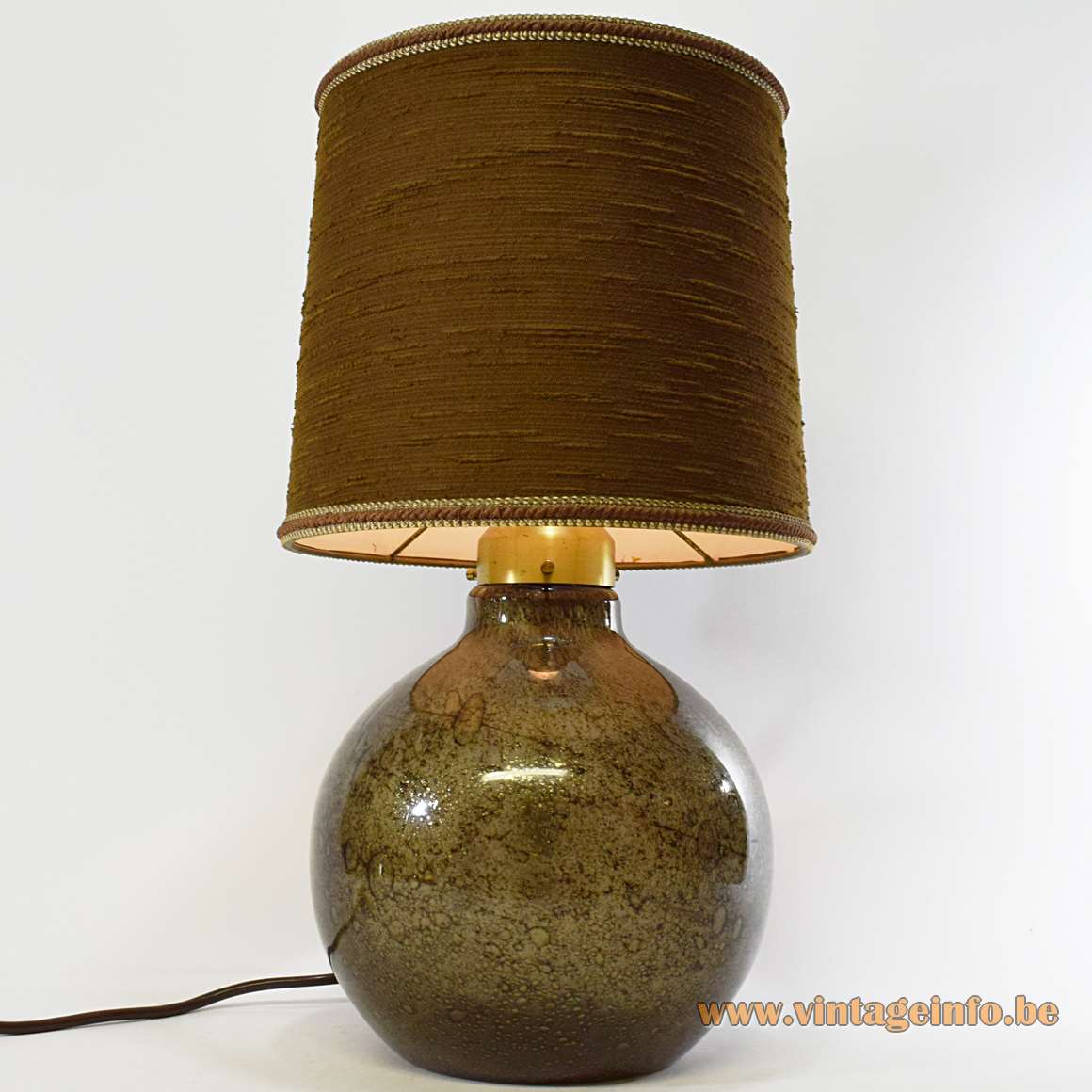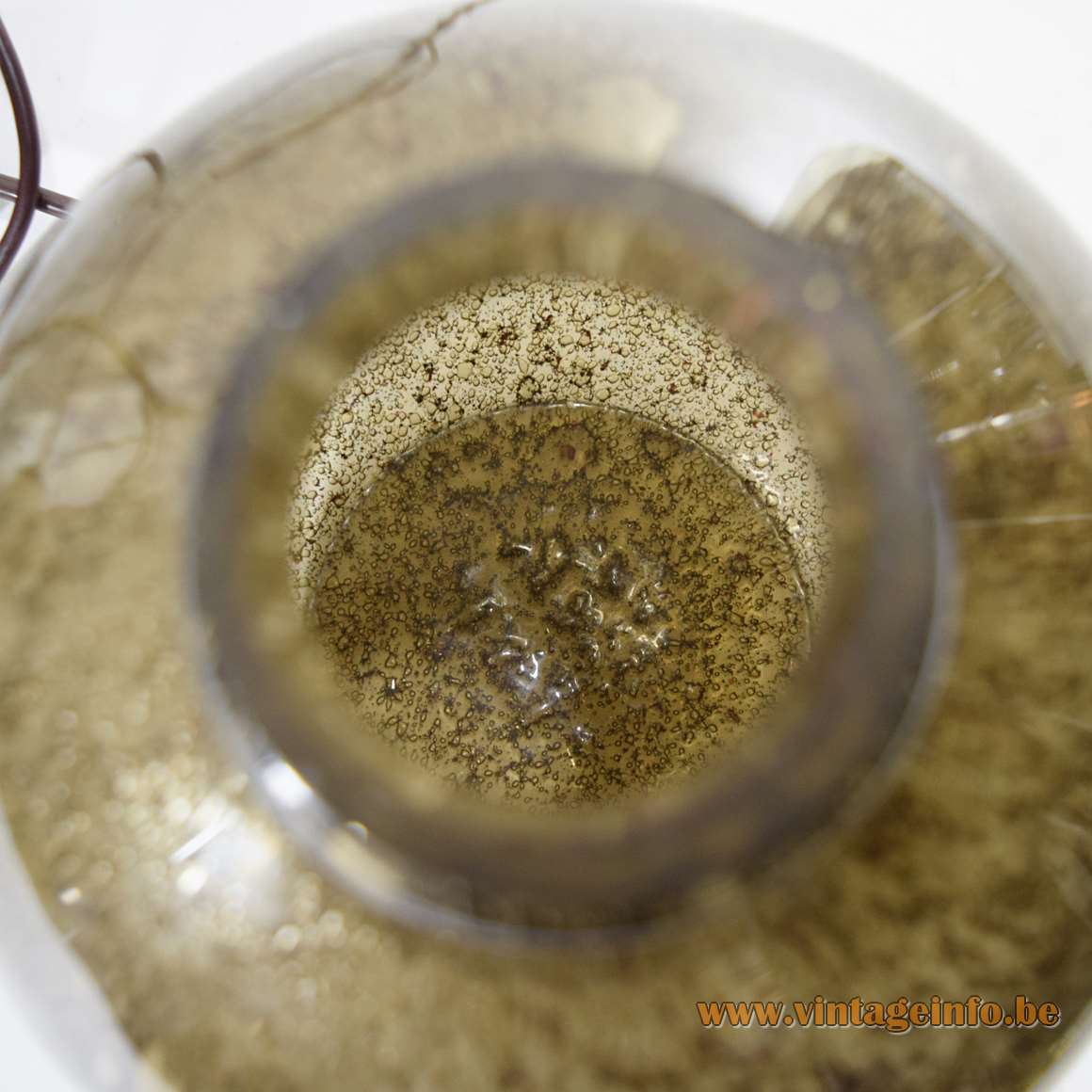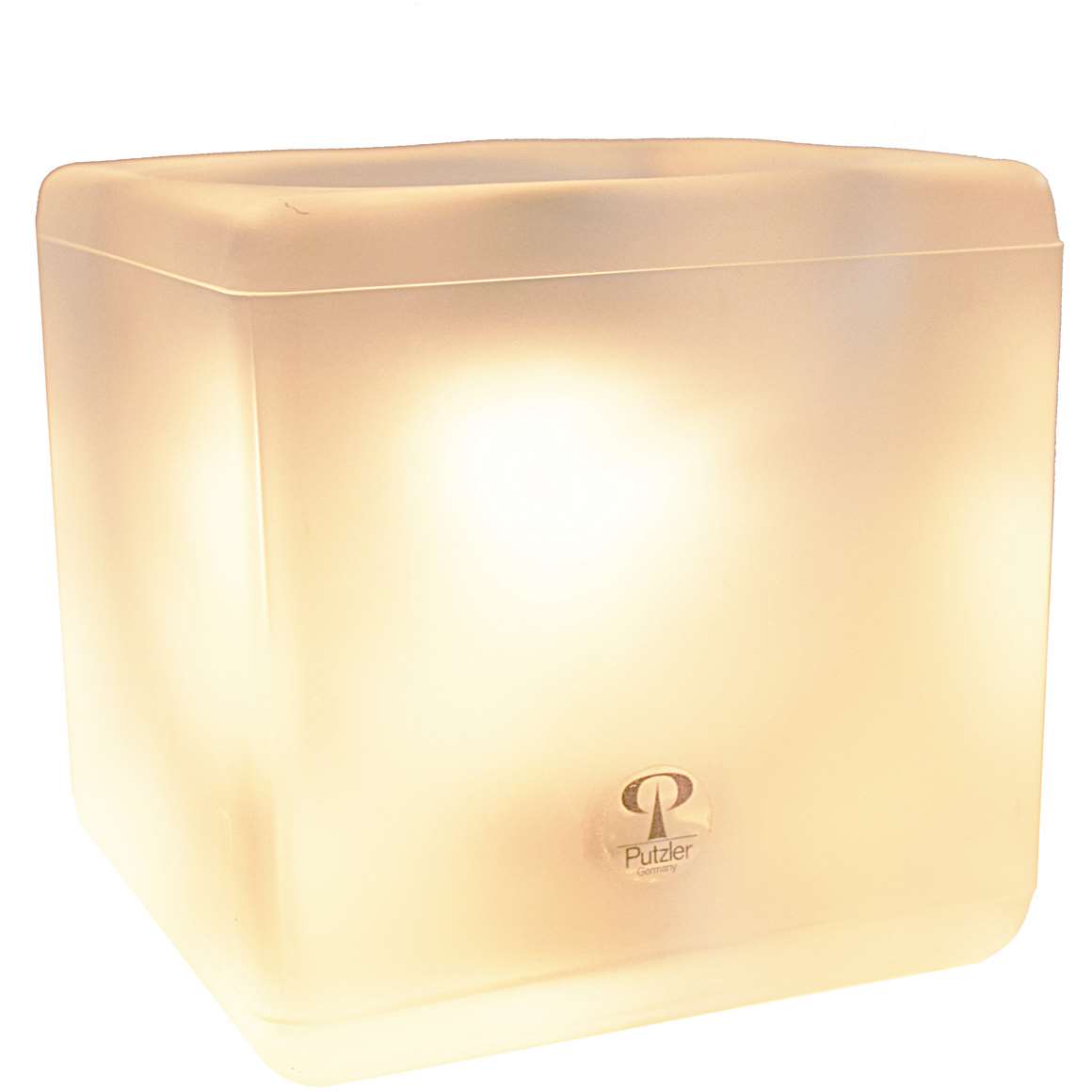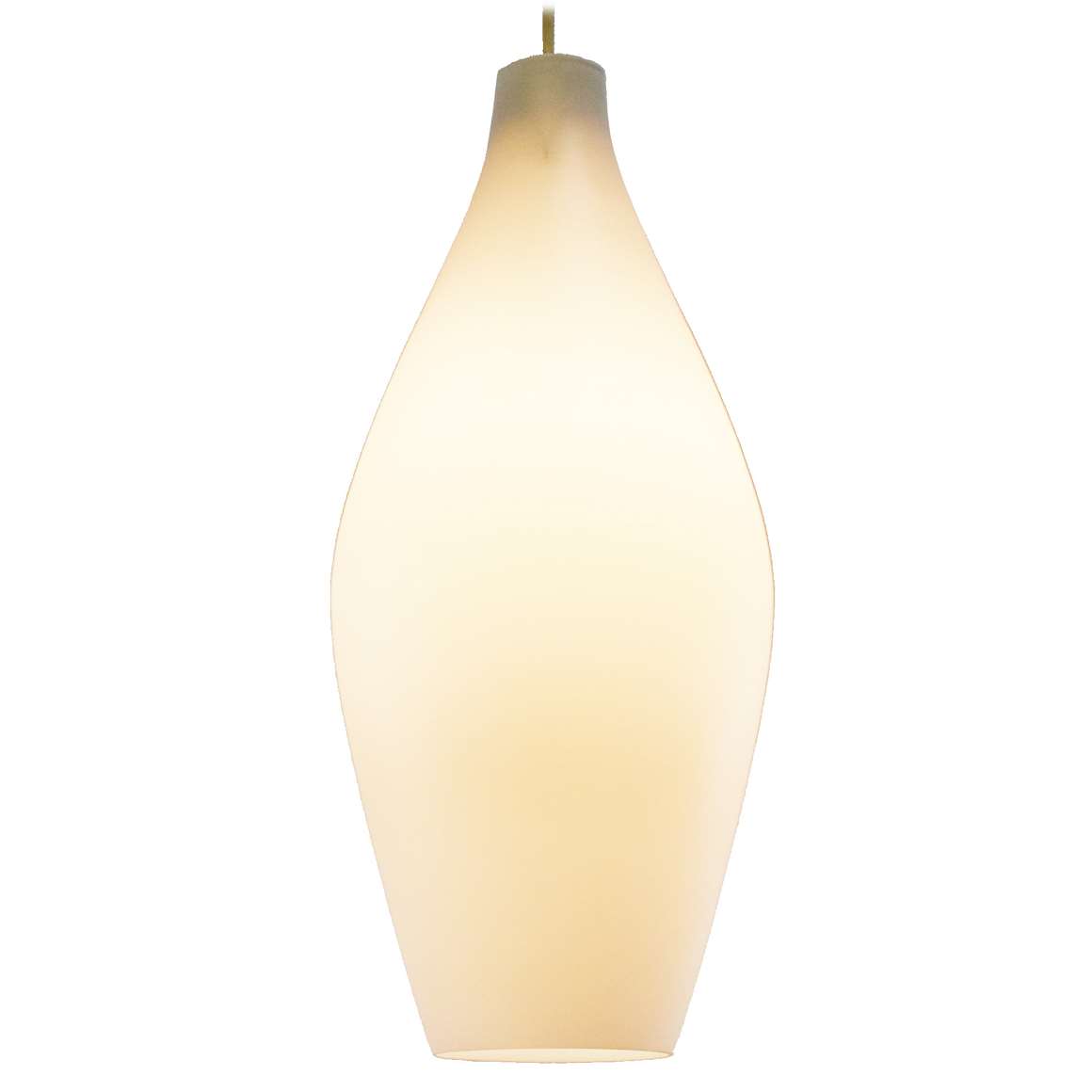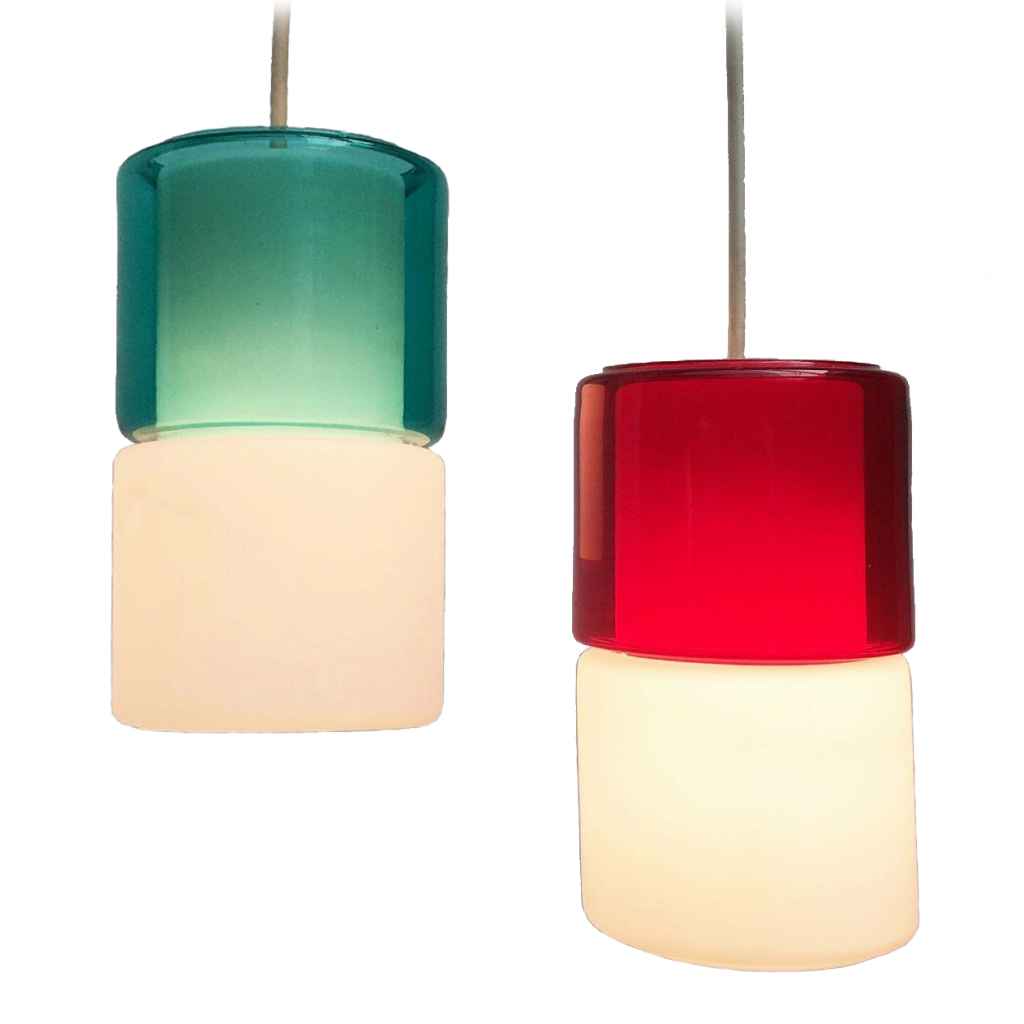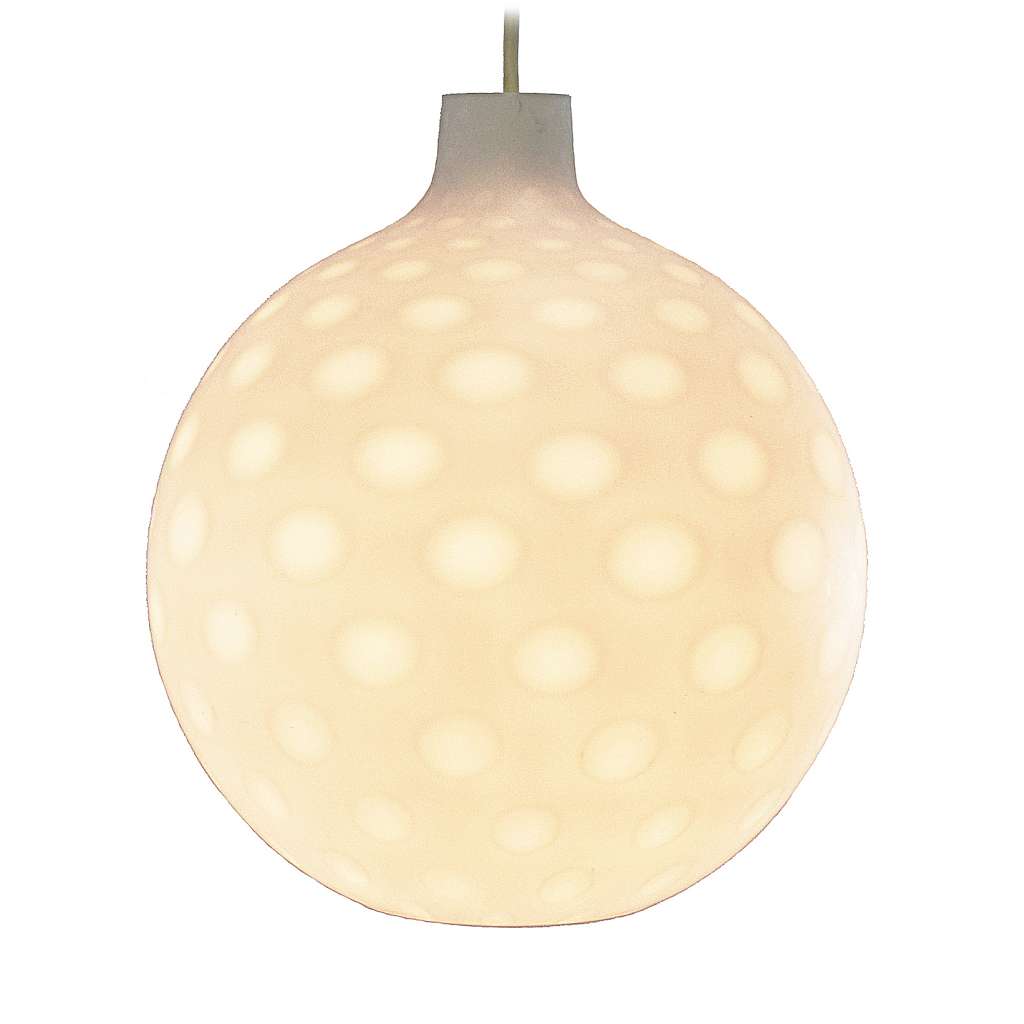Peill+Putzler Bubble Glass Table Lamp
Materials: Smoked & brown hand blown crystal bubble glass (pulegoso) bottle style globe base. Some iron and brass parts. Brown round fabric lampshade. Galvanised metal (iron) sockets.
Total Height: 52 cm / 20.47”
Height: 35 cm / 13.77”
Width: 28 cm / 11.02”
Base: ∅ 23 cm / 9.05”
Electricity: 1 bulb E27, 1 x 75 watt maximum. 1 bulb E14, 1 x 40 watt maximum, 110/220 volt. Any type of light bulb can be used. Not a specific one preferred.
Period: 1960s, 1970s – Mid-Century Modern.
Designer: To be appraised.
Manufacturer:Peill+Putzler, Düren, (West) Germany.
Other versions: This Peill+Putzler bubble glass table lamp exists in several sizes, this lamp is model 72071.
Pulegoso
Pulegoso: Italian word taken from the dialect word pulega, which means bubble. The glass is containing numerous bubbles of all sizes, produced by adding bicarbonate/soda, gasoline, or other substances to the glass. The bubbles make the glass semi-opaque and give the surface an irregular texture. The technique was developed in the 1920s by Napoleone Martinuzzi (1892-1977) on the island of Murano, Italy and used for the first time by the famous Venini company.
Peill+Putzler
Glashüttenwerk Peill und Sohn was founded in 1903 in Düren, a small town in (West) Germany. Peill und Sohn merged with Putzler (founded in 1869) in 1947 as a glassworks and lighting company, becoming Peill+Putzler Glashüttenwerke.
The company worked with important designers such as Wilhelm Wagenfeld, William Brown, Helmut Demary, Aloys Ferdinand Gangkofner, Horst Tüselmann, Dieter Sieger, Gerhard Beigel, and many others.
In the 1950s, around 1,500 people worked for the company. They also produced glass for other European lighting firms, such as Raak and Philips (The Netherlands) and Massive (Belgium), to name a few.
Peill+Putzler received many design awards, not only for lighting. The company received 86 iF Design awards.
In 1995, production of glass and lighting moved to Slovenia, Poland, and the Czech Republic. Only the trading of lamps and glass remained in Düren. In 2005, one year after its 100th anniversary (2004), the company filed for bankruptcy.
In 2008, the name Peill+Putzler was reused for several years, including for the Wagenfeld lighting sold by the German lighting company Paul Neuhaus.
Today the former Peill+Putzler factory, now called Glashütte Düren, has been converted into various businesses and a conference centre.
Peill+Putzler was reactivated in 2022–23 and is now issued by Peill+Putzler Leuchten GmbH & Co. KG in Hemer, Germany, about 150 kilometres from Düren. Organizationally, the company is linked to IS Leuchten via the same address and managing director, Torsten Alberts. A new catalogue has been online since 2025, with several of the old icons, such as the Lido table lamp.
Links (external links open in a new window)
iF-Design awards for Peill+Putzler

